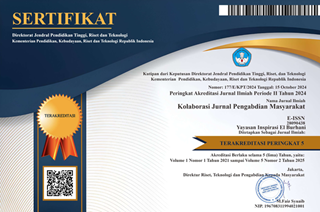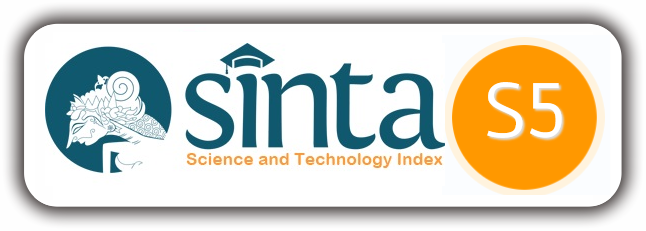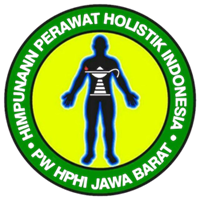Kampanye No Drugs Untuk Mencegah Resiko Penularan HIV/AIDS
DOI:
https://doi.org/10.56359/kolaborasi.v2i6.89Kata Kunci:
campaign, drugs , HIV/AIDS, youthAbstrak
Introduction: Drug abuse is closely related to crime, traffic accidents and is currently at the stage of transmission of the HIV/AIDS virus. The sharp increase in HIV prevalence among injecting drug users is caused by the use of unsterile needles and syringes coupled with the practice of group injection. Various efforts to control and prevent drugs and HIV/AIDS have been carried out, one of which is to empower the potential and knowledge of youth through youth organizations.
Objective: to implement and increase knowledge to be directly and actively involved in the prevention of drug abuse and eradication in order to avoid and prevent the risk of HIV-AIDS transmission.
Method: The methodology used is that this consultation is based on strategy, implementation and action, and ends with an assessment conducted at the end of the update, using the number of surveys available to the community according to the required survey needs.
Result: The implementation of socialization of the dangers of drugs and the risk of HIV-AIDS to Wibawa Mukti youth organizations in Ciharalang village gave significant results because increasing youth knowledge about the dangers of injecting drugs has a role in encouraging the participation of all elements of the local community to avoid drug use.
Conclussion: The implementation of socialization of the dangers of drugs and the risk of hiv-aids to youth youth organizations in the village of ciharalang gave significant results because increasing youth knowledge about the dangers of injecting drug abuse has a role in encouraging the participation of all elements of the local community to avoid drug use.
Unduhan
Referensi
Azizah, R. A. N., Kustika, A., Husaeni, S. R., Latifah, S., & Nurapandi, A. (2022). Peningkatan Pengetahuan tentang Bahaya HIV/AIDS dengan Permainan Kartu di Pondok Pesantren. Kolaborasi Jurnal Pengabdian Masyarakat, 2(2), 219–225.
Gafara, C., Riyono, B., & Setiyawati, D. (2017). Peran Karang Taruna Dalam Pemberdayaan Penyandang Disabilitas Di Desa Karangpatihan, Kabupaten Ponorogo Dan Implikasinya Terhadap Ketahanan Ekonomi Keluarga. Jurnal Ketahanan Nasional, 23(1), 37. https://doi.org/10.22146/jkn.18295
Kemenkes RI. (2020). Infodatin HIV AIDS. Kementerian Kesehatan Republik Indonesia, 1–8.
Latar, A., & Hiv, P. (2017). Perilaku Penggunaan Narkotika Suntik dan Hubungannya dengan Infeksi HIV di Kalangan Wargabinaan Lembaga Pemasyarakatan dan Rumah Tahanan di Indonesia : Studi Tinjauan Pustaka Tahun 2007-2017 , Indonesia ( Intravenous Drug Use Behavior and its Relation to , 1–14.
Layinatunnisa, A., Andriani, T., Monica, I., Maulana, Y. S., Iman, R. D., Ramadhan, G., & Rizkiyani, A. (2022). Pelatihan Kader Sebaya Anti Narkoba untuk Pencegahan HIV/AIDS di Pondok Pesantren Manarul Huda. Kolaborasi Jurnal Pengabdian Masyarakat, 2(3), 280–285.
Marni. (2020). Peningkatan Pengetahuan tentang Narkoba dan HIV / AIDS di. Indonesian Journal of Community Services, 2(2), 126–134.
Martina, E., Redjeki, S., & Mutiara, S. (2019). Penerapan Metode Permainan Ular Tangga dalam Peningkatan Pengetahuan HIV / AIDS dan Narkoba pada Remaja di Rusun Tanah Tinggi , Jakarta Application of Snakes and Ladders Game for Improving Knowledge HIV / AIDS and Drugs among Adolescents in Tanah Tinggi R. Jurnal Panrita Abdi, 3(2), 144–151.
Noor, M., Atieka, N., & Yunisa, L. (2020). Counseling Milenial ( Cm ), 1(December), 9–23.
Nuzzillah, Arifatun, N., & Sukendra, Mahendrasar, D. (2017). Analisis Pengetahuan Dan Sikap Narapidana Kasus Narkoba Terhadap Perilaku Berisiko Penularan Hiv/Aids. JHE (Journal of Health Education), 2(1), 11–19.
Priyantika, D., Wida, A. R., Maulida, H., & Husodo, B. T. (2013). “DRHIVA” Metode Baru Dalam Upaya Penanggulangan Dan Pencegahan NAPZA Dan HIV/AIDS. Jurnal Ilmiah Mahasiswa, Vol. 3, No(1), 30–34.
Safitri, N., Pramitha, S. A., Mulyana, E. N., Fauziah, S. R., Khoerunisa, K., Septanurisa, G. R., & Suhendi, D. (2022). Edukasi Perilaku Seks pada Komunitas Remaja untuk Mencegah HIV/AIDS. KOLABORASI JURNAL PENGABDIAN MASYARAKAT, 2(2), 206–211.
Suhermono, M., & Pareno, S. A. (2017). Jurnal kajian media. Jurnal Kajian Media, 1(2), 132–156.
Utomo, B., & Zani, A. P. (2004). Biostatatika dan kependudukan. Potensi Penyebaran Hiv Dari Pengguna Napza Suntik Ke Masyarakat Umum, 8(2), 53–58.
Wadu, L. B., Ladamay, I., & Jama, S. R. (2019). Keterlibatan Warga Negara Dalam Pembangunan Berkelanjutan Melalui Kegiatan Karang Taruna. Jurnal Pendidikan Kewarganegaraan, 9(2), 1. https://doi.org/10.20527/kewarganegaraan.v9i2.7546
Unduhan
Diterbitkan
Cara Mengutip
Terbitan
Bagian
Lisensi
Hak Cipta (c) 2022 KOLABORASI JURNAL PENGABDIAN MASYARAKAT

Artikel ini berlisensi Creative Commons Attribution 4.0 International License.












